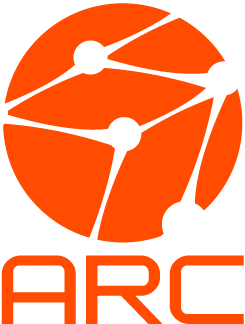Grid computing is the use of widely distributed computer resources to reach a common goal. A computing grid can be thought of as a distributed system with non-interactive workloads that involve many files. Grid computing is distinguished from conventional high-performance computing systems such as cluster computing in that grid computers have each node set to perform a different task/application. Grid computers also tend to be more heterogeneous and geographically dispersed than cluster computers. Although a single grid can be dedicated to a particular application, commonly a grid is used for a variety of purposes. Grids are often constructed with general-purpose grid middleware software libraries. Grid sizes can be quite large.
Open Grid Services Architecture (OGSA) describes a service-oriented architecture for a grid computing environment for business and scientific use. It was developed within the Open Grid Forum, which was called the Global Grid Forum (GGF) at the time, around 2002 to 2006.
HTCondor is an open-source high-throughput computing software framework for coarse-grained distributed parallelization of computationally intensive tasks. It can be used to manage workload on a dedicated cluster of computers, or to farm out work to idle desktop computers – so-called cycle scavenging. HTCondor runs on Linux, Unix, Mac OS X, FreeBSD, and Microsoft Windows operating systems. HTCondor can integrate both dedicated resources and non-dedicated desktop machines into one computing environment.
The Open Grid Services Infrastructure (OGSI) was published by the Global Grid Forum (GGF) as a proposed recommendation in June 2003. It was intended to provide an infrastructure layer for the Open Grid Services Architecture (OGSA). OGSI takes the statelessness issues into account by essentially extending Web services to accommodate grid computing resources that are both transient and stateful.
The Terascale Open-source Resource and Queue Manager (TORQUE) is a distributed resource manager providing control over batch jobs and distributed compute nodes. TORQUE can integrate with the non-commercial Maui Cluster Scheduler or the commercial Moab Workload Manager to improve overall utilization, scheduling and administration on a cluster.
Distributed Resource Management Application API (DRMAA) is a high-level Open Grid Forum (OGF) API specification for the submission and control of jobs to a distributed resource management (DRM) system, such as a cluster or grid computing infrastructure. The scope of the API covers all the high level functionality required for applications to submit, control, and monitor jobs on execution resources in the DRM system.

Advanced Resource Connector (ARC) is a grid computing middleware introduced by NorduGrid. It provides a common interface for submission of computational tasks to different distributed computing systems and thus can enable grid infrastructures of varying size and complexity. The set of services and utilities providing the interface is known as ARC Computing Element (ARC-CE). ARC-CE functionality includes data staging and caching, developed in order to support data-intensive distributed computing. ARC is an open source software distributed under the Apache License 2.0.
GridWay is an open-source meta-scheduling technology that enables large-scale, secure, reliable and efficient sharing of computing resources, managed by different distributed resource management systems (DRMS), such as SGE, HTCondor, PBS or LSF, within a single organization or scattered across several administrative domains. To this end, GridWay supports several Grid middlewares.

The Open Grid Forum (OGF) is a community of users, developers, and vendors for standardization of grid computing. It was formed in 2006 in a merger of the Global Grid Forum and the Enterprise Grid Alliance. The OGF models its process on the Internet Engineering Task Force (IETF), and produces documents with many acronyms such as OGSA, OGSI, and JSDL.
The Simple API for Grid Applications (SAGA) is a family of related standards specified by the Open Grid Forum to define an application programming interface (API) for common distributed computing functionality.
Configurable Network Computing or CNC is JD Edwards's (JDE) client–server proprietary architecture and methodology that implements its highly-scalable enterprise-wide business solutions software that can run on a wide variety of hardware, operating systems (OS) and hardware platforms. Now a division of the Oracle Corporation, Oracle continues to sponsor ongoing development of the JD Edwards Enterprise Resource Planning (ERP) system, While highly flexible, the CNC architecture is proprietary and, as such, it cannot be exported to any other systems. While the CNC architecture's chief 'Claim to fame', insulation of applications from the underlying database and operating systems, were largely superseded by modern web-based technology, nevertheless CNC technology continues to be at the heart of both JD Edwards' One World and Enterprise One architecture and will play a significant role Oracle's developing fusion architecture initiative. While a proprietary architecture, CNC is neither an Oracle nor JDE product offering. The term CNC also refers to the systems analysts who install, maintain, manage and enhance this architecture. CNC's are also one of the three technical areas of expertise in the JD Edwards Enterprise Resource Planning ERP which include developer/report writer and functional/business analysts.
Globus resource allocation manager is a software component of the Globus Toolkit that can locate, submit, monitor, and cancel jobs on Grid computing resources. It provides reliable operation, stateful monitoring, credential management, and file staging.

gLite is a middleware computer software project for grid computing used by the CERN LHC experiments and other scientific domains. It was implemented by collaborative efforts of more than 80 people in 12 different academic and industrial research centers in Europe. gLite provides a framework for building applications tapping into distributed computing and storage resources across the Internet. The gLite services were adopted by more than 250 computing centres, and used by more than 15000 researchers in Europe and around the world.
The Globus Alliance is an international association founded by the University of Chicago and the Argonne National Laboratory dedicated to developing fundamental technologies needed to build grid computing infrastructures. The Globus Alliance was officially established in September 2003, out of the Globus Project that was established in 1995.

The Slurm Workload Manager, formerly known as Simple Linux Utility for Resource Management (SLURM), or simply Slurm, is a free and open-source job scheduler for Linux and Unix-like kernels, used by many of the world's supercomputers and computer clusters.
Univa Grid Engine (UGE) is a batch-queuing system, forked from Sun Grid Engine (SGE). The software schedules resources in a data center applying user-configurable policies to help improve resource sharing and throughput by maximizing resource utilization. The product can be deployed to run on-premises, using IaaS cloud computing or in a hybrid cloud environment.
GridRPC in distributed computing, is Remote Procedure Call over a grid. This paradigm has been proposed by the GridRPC working group of the Open Grid Forum (OGF), and an API has been defined in order for clients to access remote servers as simply as a function call. It is used among numerous Grid middleware for its simplicity of implementation, and has been standardized by the OGF in 2007. For interoperability reasons between the different existing middleware, the API has been followed by a document describing good use and behavior of the different GridRPC API implementations. Works have then been conducted on the GridRPC Data Management, which has been standardized in 2011.
Middleware is a type of computer software that provides services to software applications beyond those available from the operating system. It can be described as "software glue".



